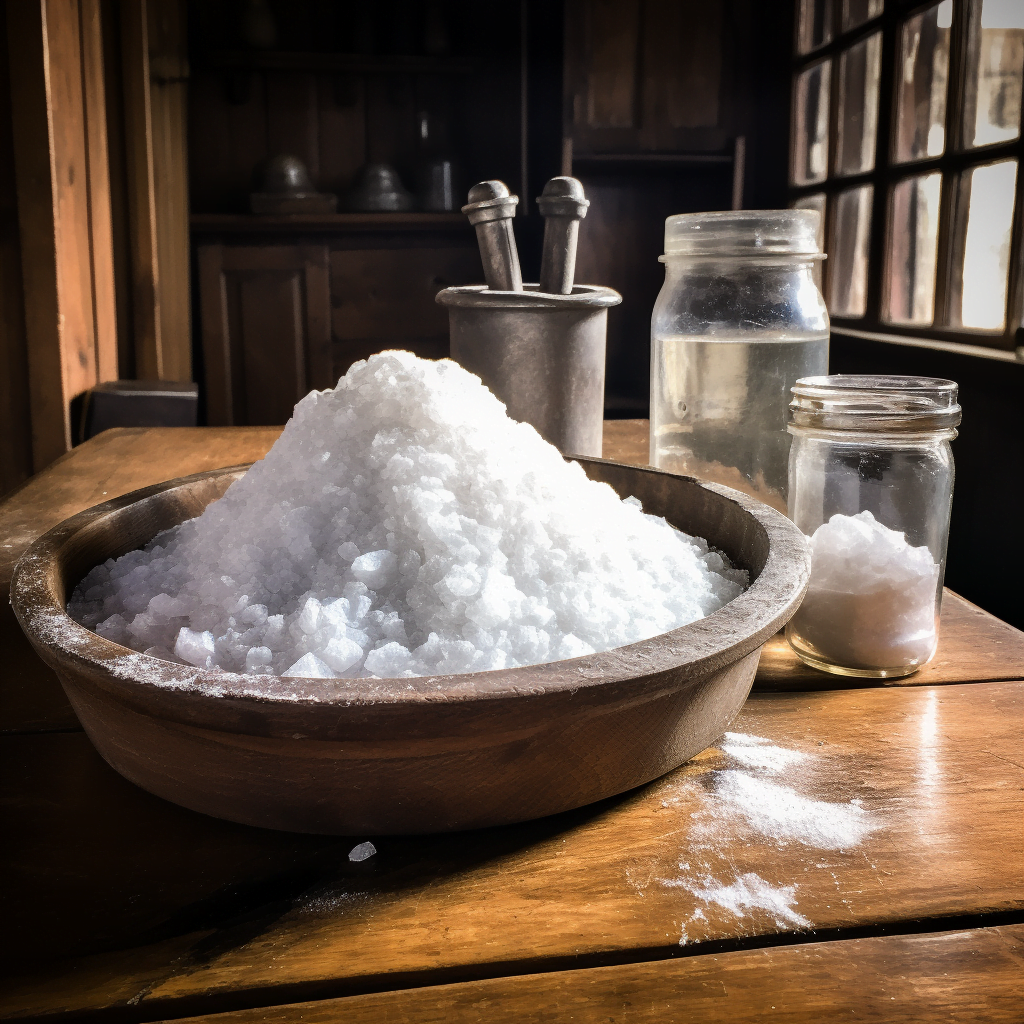What Is Prague Powder?

Ah, the joys of a good British ploughman’s lunch. A slab of cured meat, a hunk of bread, some pickles… But wait, ever wondered about the unsung hero behind that perfect slice of cured ham or salami? Say hello to Prague powder, the superstar of the cured meat world. But what exactly is this magical pink powder? And why is it so crucial for our meaty treats? Let’s delve in.
Delving into the Chemistry
Prague powder isn’t just your average table salt. Comprising sodium nitrite and sodium nitrate, this salt means serious business. Its primary role? Battling those pesky bacteria and preventing meat oxidation. Ever noticed its striking pink hue and thought it was a tribute to flamingos or Barbie? Sadly not. The pink colour is intentional, ensuring it isn’t mistaken for regular salt or sugar. Clever, right?
The History of Prague Powder
Prague Powder, often known as “curing salt” or “pink salt”, though not the kind you’d sprinkle over your avocado toast, has an intriguing history. Its name derives from its city of origin – Prague, in the Czech Republic.
The use of curing agents to preserve meats is an ancient practice. For centuries, saltpetre (potassium nitrate) was the primary substance for meat curing. However, in the 20th century, with advances in food science, a more refined and consistent method was developed: enter Prague Powder. This curing salt, made of a blend of sodium nitrite, sodium nitrate, and table salt, presented a more predictable and efficient way to cure meats.
Prague Powder in the British Culinary Scene
While Prague might be a few hundred miles from our British shores, its powder has found a special place in our charcuterie boards. From Cornwall to Cumbria, traditional British charcuteries have relied on this curing agent to perfect their meats. Modern chefs, too, are singing its praises while simultaneously navigating the minefield debate around nitrates in food.
Common Meats Cured Using Prague Powder:
- Bacon: Arguably the champion of the breakfast table, bacon is often cured using Prague Powder, which contributes to its distinct pinkish-red colour and savoury taste.
- Corned Beef: St. Patrick’s Day wouldn’t be the same without this pink, brined beef. Prague Powder imparts that signature colour and flavour to the meat, ensuring its preservation and delectability.
- Ham: The holiday tables and sandwiches are often graced by hams cured using Prague Powder, preserving the meat and imparting a characteristic colour and flavour.
- Salami and Other Dry Sausages: Prague Powder is essential in many dry sausage recipes. It not only provides flavour and colour but also ensures the meat is safe to eat after its extended drying and ageing process.
- Jerky: For those who enjoy this chewy, protein-rich snack, Prague Powder is often behind the scenes, ensuring the meat remains preserved during the drying process.
A Step-by-Step Guide: Using Prague Powder Safely
Venturing into the world of homemade cured meats? Hold your horses! (Or should we say, hold your hams?) Precision is paramount when using Prague powder. A little too much, and you’re in the danger zone; too little, and say hello to unwanted bacteria. So, always measure diligently and follow recipes to the tee. Grab yourself a salt pig too so you can accurately control the amount you used. From bacon to brisket, ensure your meat marvels are both tasty and safe.

Beyond Meat Preservation: Other Uses
While Prague powder’s claim to fame is meat curing, it’s not a one-trick pony. Fancy a pop of pink in your seafood? Or a dash of dramatic colour in your pickled vegetables? This pink salt has got you covered. And in some culinary corners, it’s even used to achieve particular flavour profiles. Versatile, isn’t it?
Prague Powder FAQs
Why is Prague powder pink?
It’s to ensure it’s not mistaken for other kitchen staples like regular salt or sugar. Safety first!
Can I substitute regular salt for Prague powder?
Nope. Regular salt lacks the bacteria-fighting components of Prague powder.
Is consuming cured meats with Prague powder safe?
In moderation and when prepared correctly, yes. But as with all things, it’s about balance.
The Global Scene: Curing Agents Around the World
While Prague powder reigns supreme in many kitchens, other curing agents dance across the global stage. There’s the sel rose or French pink salt (not to be confused with Himalayan pink salt). And then, the old-school saltpetre, a curing favourite for centuries. Some even lean towards natural alternatives, though their efficacy is up for debate.

Conclusion: Embracing Traditional Techniques in Modern Cuisine
From smoked salmon bagels to classic cured ham, Prague powder bridges the past with the present, ensuring our meats are safe, scrumptious, and simply irresistible.

Andy
Ever since I started cooking I’ve been fascinated by how different people’s techniques are and how they best utilise the ingredients around them. Even the person living next door will have their own unique way of frying an egg or cooking a salmon fillet.
This fascination led me on a journey across the globe to discover the countless practices and traditions the world of cooking has to offer. I thought you’d enjoy and find value in sharing that journey with me so I created Cooked Best!